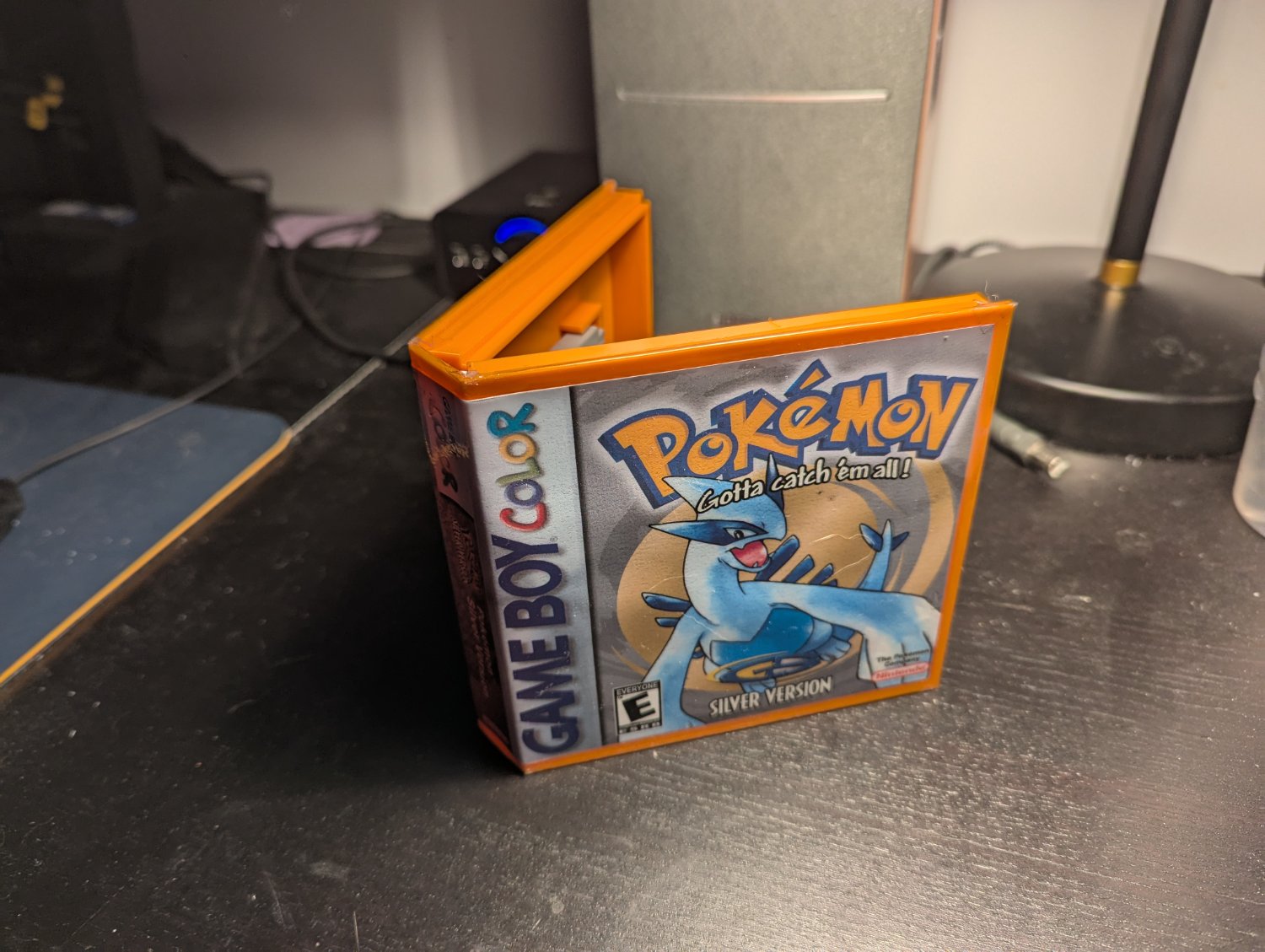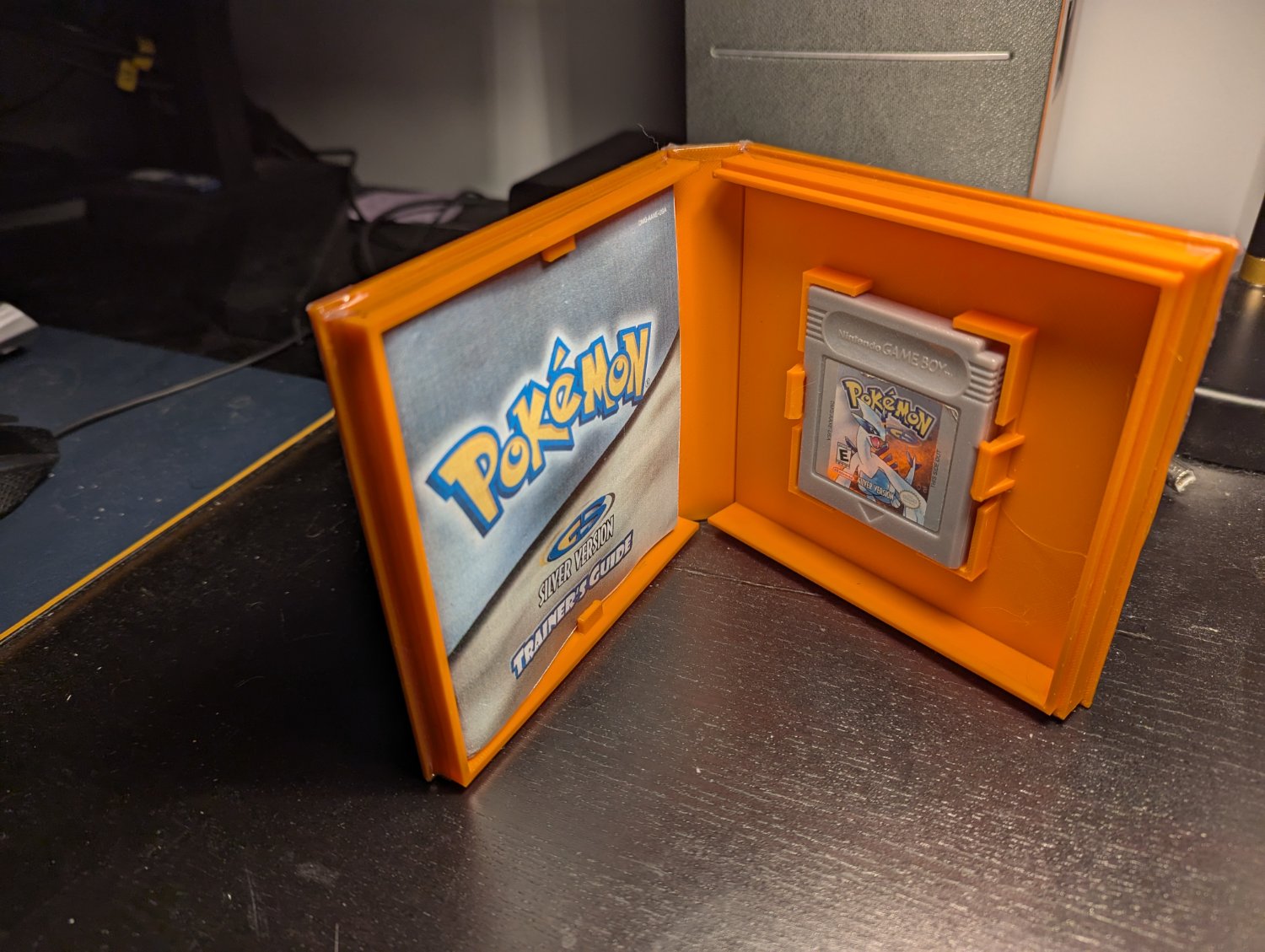Ion fury and Hedon are solid too, build engine and gzdoom respectively. Selaco though, sometimes it’s almost hard to believe it’s running on the doom engine.
- 0 Posts
- 12 Comments
I’m printing a bunch of these gameboy cartridge cases, replacing the batteries in all my partner’s old Pokémon games and then attempting to put a cover on them, no artist so relying on The cover project for those, meant for ds cases but it’s close enough.

And manuals (Thanks internet archive)
I did mine first as a test run, just need to do the rest.
I had an issue I caught early when I swapped my prusa from a Rambo to an skr mini, used the same power wires which didn’t have ferrules, I got “lucky” that the power supply shut itself down, one wire had worked itself a bit loose, enough to potentially arc.
I’ve replaced everything with new 14 awg wire with solid ferrules and I inspect semi regularly, I trust my crimps here but I don’t mess around with potential fire hazards. I think there’s a tendency to think, oh it’s low voltage, it’s fine, but there’s a lot of energy going through those wires, treat it with the same respect you would mains power. Take your time, double check everything, and invest in good crimping tools.

 2·4 days ago
2·4 days agoJellyfin does support dlna as well
Honestly I just use my nas for that with a network mount on my machines. Have been using git though with freecad for source control on one of my projects.
Are you thinking of going something like a document management system or Library?

 3·6 days ago
3·6 days ago
My voron with can toolhead, using a pt1000, I’d accept +/- a degree or so but that’s a bit more than that. Could trying calibrating the pullup value manually? I’m using Generic 3950 for the sensor types on the Semitec 100k thermistors (chamber temp and plate temp are both using one of those), had the best results with that personally, could see if that helps things.

 7·7 days ago
7·7 days agoSecond hand though would help, wouldn’t be surprised if we see a bunch of mk3s and maybe even some mk4 with their new printer coming out. I still use my mk3s pretty frequently, made a bunch of mods to it, still chugs along.

 3·8 days ago
3·8 days agoI bought one of these Micro-Dehumidifier modules earlier this year I’ve been meaning to use in a dry-box I need to finish (got busy, forgot about it). Allegedly solid results without the need for desiccant and there’s an AMS mounting solution. They’re pricey but might be something to look at.

 4·14 days ago
4·14 days agoDecided to benchmark with my system quickly just to get some idea of performance, have a 4070ti for reference. I recall dlss frame gen giving markedly improved frames in windows.
Cyberpunk 2077 @3440x1440, Ultra + Raytracing on with ray traced lighting at ultra, no pathtracing. DLSS and FSR set to quality. All of these are just averages, nothing was really wild with minimum fps or anything.
DLSS only ~53 fps
DLSS + DLSS Frame Gen ~78 fps
DLSS + DLSS Frame Gen + DLSS Ray Reconstruction ~77 fpsAMD fsr 3 only ~48 fps
AMD fsr 3 + FSR Frame Gen ~94 fps
AMD fsr 3 + DLSS Frame Gen ~78 fpsI’m actually impressed with the performance of FSR frame gen, didn’t expect it to be that much higher, could be that dlss frame gen is super new in linux? Probably not worth speculation. Also can’t comment on perceived looks of them though, that’s going to be super subjective.
This is all on arch with the most up to date nvidia open drivers with proton experimental.

 2·14 days ago
2·14 days agoNo problem, most games I’ve tried run without much fuss just with proton enabled. For others, protondb is great (pointed in the right direction to get Jade Empire running) or fiddling with settings yourself, gamescope helps a lot even if I’ve found it has some issues with nvidia cards (had games freeze with hdr for example), more of my issues are probably related to having an ultrawide tbh.

 5·14 days ago
5·14 days agoI ripped the bandaid off last month, there’s definitely fiddling and hdr is still in early days (works in gamescope, but found that can have issues with my nvidia card), I’ve been playing veilguard on proton ge for the last week, and proton experimental supports dlss frame gen now which is huge for me.
It’s definitely in the good enough state imo, and it seems to rapidly be getting better.
Might find this interesting, uses abs, there’s an example at the end of using one of the fdm printed lenses with lasers
I’ve tried with petg, was just for looks (transparent cases) rather than optical use, wasn’t super satisfied with it. Might try abs, it takes to acetone smoothing really nicely